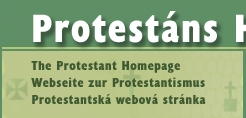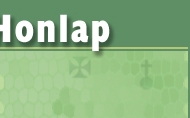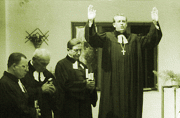|
The Protestant past of Upper Northern Hungary
The age of Reformation and the significance of Protestantism
The defeat at Mohács (1526) and the following troublous times had their consequences for the Hungarian people, lasting up till now. The country split into three parts. The greatest part of the country was detached by the Turkish Empire. In Transylvania, in the shadow of the Ottoman half-moon, a satellite state of the "friendly" Turkish Empire emerged. In the course of the stormy centuries, Transylvania proved to be the most outstanding stronghold of the Hungarian Reformation and cultural history. North-Hungary, West-Hungary and a part of Croatia, living in personal union with her, represented only the Hungarian Kingdom where under Habsburg guidance, the new state life had been reorganized in the new Hungarian capital, Pozsony (Bratislava). Except of the determining number of Hungarian inhabitans, Croat, German, Slovak and Sloven people lived here in significant number.
The continuous fights destroyed human lives and fortunes. On the territory of the former Turkish rule, nearly all the architectural relics of the medieval Hungary were destroyed, most of our settlements were made even with the ground. All the cultural relics of the once flurishing state decayed or were dragged away.
The west and north territories, being parts of the Hungarian Kingdom, as well as the partially independent Transylvanian Principality were in a more fortunate situation. The towns, castles, cultural institutions weathered out the storms of centuries and the medieval Hungary unfolds herself in fabulous wealth up till now.
The Reformation flourished in this hard period in Hungary. Even if the foreign powers deprived the inhabitants of the country split into three parts, of a lot of their assets, but flourishing cultural centres were called into existence in the Carpathian-basin, by those who are creating not from worldly treasures. This golden age of faith and culture had an influence on all the inhabitants of the Carpathian-basin. The fraternal coexistence of the Croat, Hungarian, German, Slovac inhabitants of those times in the Hungarian Kingdom, can be said to be exemplary up till now. In the towns, villages of Upper Northern Hungary, there existed three-language-speaking Lutheran communities. Eperjes (Presov), Pozsony (Bratislava), and several other bigger settlements employed four ministers. One was the "first pastor", the others were preaching either in Hungarian, or German or Slovak language. Among the evangelical churches in the Carpathian-basin, the Lutheran church was characterized by the several different nationalities. The Calvinists were primarily Hungarian-speaking, but there were also some German-speaking as well.
The peace-treaties of Versailles és Paris, closing the I. and II. World Wars, eliminated the former Hungary. The most characteristic pieces of our built and cultural relics can be found in the successor states of the earlier Monarchy. The Hungarians living in these regions try to care for the past to their best abilities. The states with fresh national consciousness consider the development and promotion of their own memory, as a primary point of view. The Hungarians of Hungary and the neighbouring states, especially the younger generation, the not Hungarian-speaking inhabitants of the Carpathian-basin, have no informations about the earlier setting of the relation to faith, geography and buildings, about the once flourishing culture and the exemplary peaceful coexistence, on the territory of the present Slovakia.
The Reformation flourished in this hard period in Hungary. Even if the foreign powers deprived the inhabitants of the country split into three parts, of a lot of their assets, but flourishing cultural centres were called into existence in the Carpathian-basin, by those who are creating not from worldly treasures. This golden age of faith and culture had an influence on all the inhabitants of the Carpathian-basin. The fraternal coexistence of the Croat, Hungarian, German, Slovac inhabitants of those times in the Hungarian Kingdom, can be said to be exemplary up till now. In the towns, villages of Upper Northern Hungary, there existed three-language-speaking Lutheran communities. Eperjes (Presov), Pozsony (Bratislava), and several other bigger settlements employed four ministers. One was the "first pastor", the others were preaching either in Hungarian, or German or Slovak language. Among the evangelical churches in the Carpathian-basin, the Lutheran church was characterized by the several different nationalities. The Calvinists were primarily Hungarian-speaking, but there were also some German-speaking as well.
The peace-treaties of Versailles és Paris, closing the I. and II. World Wars, eliminated the former Hungary. The most characteristic pieces of our built and cultural relics can be found in the successor states of the earlier Monarchy. The Hungarians living in these regions try to care for the past to their best abilities. The states with fresh national consciousness consider the development and promotion of their own memory, as a primary point of view. The Hungarians of Hungary and the neighbouring states, especially the younger generation, the not Hungarian-speaking inhabitants of the Carpathian-basin, have no informations about the earlier setting of the relation to faith, geography and buildings, about the once flourishing culture and the exemplary peaceful coexistence, on the territory of the present Slovakia.
In the year 2004 A.D., also because of the expected membership of the European Union of Hungary and Slovakia, the elaboration of the past, the outstanding personalities, the present structure and activities of the Slovak Protestant - Lutheran and Calvinist - churches, the earlier Protestant communities of Upper Northern Hungary, becomes especially important, using the possibilities of the Internet form and the presentation on www.
In the present situation of the Hungarian-speaking Protestant population being one time of considerable number, it is a great help to reveal their earlier past, to preserve it in electronic form, and to present the peaceful centuries of coexistence.
Pages about this topic:
Pozsonyi Új Szó
Szlovákiai Magyar Napilap
Szlovák országos telefonkönyv
szlovák és angol nyelven
Subpages
Szlovákiai Református Keresztyén Egyház
Bártfa (Bardejov, Bartfeld Sk)
Berzevice (Brezovica nad Torysou, Bersewitz, Sk)
Besztercebánya (Neosolium, Banská Bystrica, Neusohl, Sk)
Csehberek (České Brezovo, Böhmisch-Briesau, Sk)
Csetnek (Štítnik) Sk
Dunaszerdahely (Dunajská Streda, Sk)
Eperjes (Presov)
Felsőszeli (Horné Saliby)
Fülek (Fil'akovo Sk)
Gálszécs (Sečovce Sk)
Horhi (Horša, Garsch, Sk)
Igló (Villa Nova, Spišská Nová Ves, Zipser Neudorf Sk)
Kassa (Košice, Kaschau Sk)
Késmárk (Kesmarkium, Kežmarok, Käsmark, Kiezmark, Sk)
Komárom (Komarno)
Losonc (Lučenec, Losontz Sk)
Mosóc (Mošovce, Sk)
Nyitra (Nitra, Neutra, Sk)
Pelsőc (Plešivec, Sk)
Pozsony (Bratislava)
Rimaszombat (Rimavská Sobota Sk)
Sajógömör (Gemer Sk)
Somorja (šamorin, Sk)
Szakolca (Skalica, Skalitz SK)
Szenc (Szempcz, Senec, Wartberg, Sk)
Szepesolaszi (Latina Villa, Spišské Vlachy, Wallendorf Sk)
Szklabonya (Sklabiná Sk)
Trencsény-teplic (Trenčínská Teplá Sk)
Zólyom (Zvolen, Sk)
|














